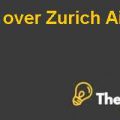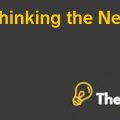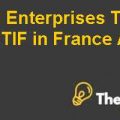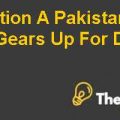Introduction
The rubric of the case illustrates a myth of providing the management consulting services to the related clients and other new emerging businesses. Under the particular scenario, McKinsey and Company was one of the successful management consulting firms, which provided vast services and solutions to its prospective clients and other new enterprises to growth within a particular industry. On the other hand, a complex and undetermined culture of the company had attracted many new partners to become part of the company’s future success. The uniqueness of the served clienteles was necessary for the business success because it was the main operational activity of the firm which utilized billings and profits then distributed to the related partners and other connected consultants who made important decisions and provides enormous services to the prospective clients. Also, another important factor for the success of the business was that McKinsey was granting authority and ownership to each of the consultants to operate their area and to perform best results in exchange for the compensation and other benefits fixed by the planning committee and managing partners.With all these important considerations, it has been analyzed that retaining a partner was the important decision for the company.It means that if the turnover would be high, then it can be said that a particular decrease in the profit margins would incur because the clients would be reduced upon expelled partner (Performed as aconsultant).
McKinsey & Company Harvard Case Solution & Analysis
Therefore, it is concluded that McKinsey was exceptionally lucky in 1956 because of its ability to increase the firm’s partners for increasing the profit margins more than the expected one. Moreover, being a decentralized structure of the enterprise, partners and other authoritative persons feltfree to take decisions individually to expand the size of the business regarding more profits. Thus, with all these concerns, it is assessedthat McKinsey was under the multiplelevels of structure and internal operations subjected to increase the risks and threats from other players in the particular industry. From the client’s perspective, theprimary objective is to allow them to earn profits by consider being an individual business rather than distribute the share with the partner. It means that the client would only focus on the earnings rather than provide benefit to the other from the current share. This concept is somehow suitable to attract the customers and consultants to increase the billings and shared profits for the firm’s managing partners. The detailed history of McKinsey also provides fluctuations in the performance of the management because of the turnover of the policies and procedures in against of the economic downturn or upward. So, with all these considerations, it can evaluate the future of the business based on the fixed terms and policies applied by McKinsey overtime.
Problem Statement
After the critical evaluation of the firm, a tweak impact of the overall performance determined several challenges in the stage to provide services with the specialist consultancy. The first issue was the inability of McKinsey & Company to increase the staff overtime because of the high cost and expense turnover, which was distributing to the principle, partners, and individual consultants.......................
This is just a sample partical work. Please place the order on the website to get your own originally done case solution.













